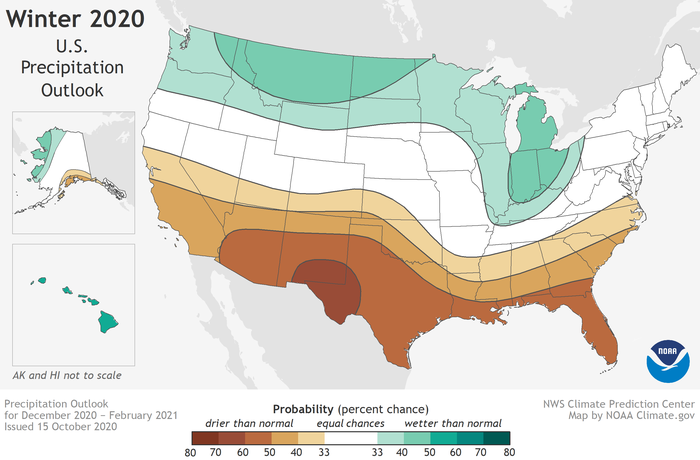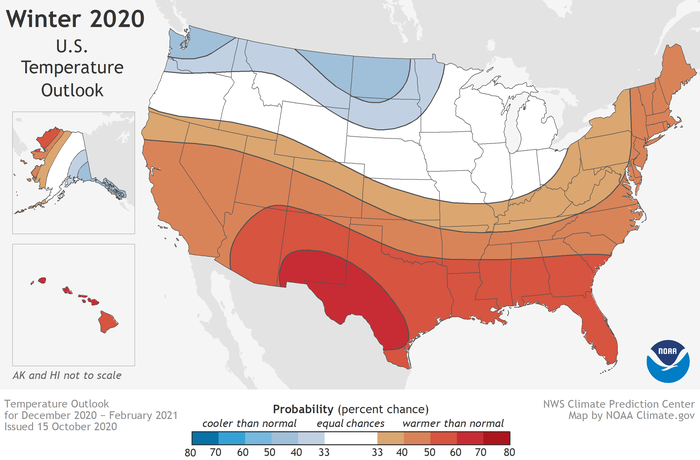2020-2021 Winter Outlook
October 15, 2020, – Forecasters at NOAA’s Climate Prediction Center released the 2020 U.S. Winter Outlook today.
“NOAA’s winter forecast for the U.S. favors warmer, drier conditions across the southern tier of the U.S., and cooler, wetter conditions in the North, thanks in part to an ongoing La Niña. Forecasters at NOAA’s Climate Prediction Center – a division of the National Weather Service – are also closely monitoring persistent drought during the winter months ahead, with more than 45% of the continental U.S. now experiencing drought.”
“With La Nina well established and expected to persist through the upcoming 2020 winter season, we anticipate the typical, cooler, wetter North, and warmer, drier South, as the most likely outcome of winter weather that the U.S. will experience this year,” said Mike Halpert, deputy director of NOAA’s Climate Prediction Center.
The 2020 U.S. Winter Outlook (December through February):
Precipitation
-
Wetter-than-average conditions are most likely across the northern tier of the U.S., extending from the Pacific Northwest, across the Northern Plains, Great Lakes, and into the Ohio Valley as well as Hawaii and northern Alaska.
-
The greatest chances for drier-than-average conditions are predicted in the Southwest, across Texas, along the Gulf Coast, and in Florida.
- More modest chances for drier conditions are forecast in southern Alaska, and from California across the Rockies, Central Plains, and into the Southeast.
-
The remainder of the U.S., including the Mid-Atlantic and Northeast falls into the category of equal chances for below-, near-, or above-average precipitation.
Temperature
-
The greatest chances for warmer-than-normal conditions extend across the Southern tier of the U.S. from the Southwest, across the Gulf states, and into the Southeast.
-
More modest probabilities for warmer temperatures are forecast in the southern parts of the west coast, and from the Mid-Atlantic into the Northeast.
-
Above-average temperatures are also favored for Hawaii and western and northern Alaska.
- Below-normal temperatures are favored in southern Alaska and from the northern Pacific Northwest into the Northern Plains, with equal chances for below-, near- or above-average temperatures in the remaining regions.



